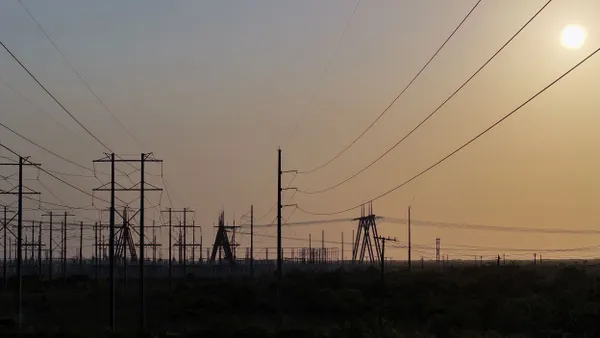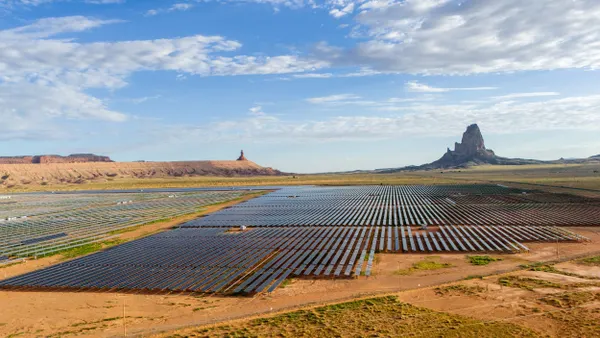Dive Brief:
-
An ongoing push to expand renewable energy generation in the U.S. could strand at least $68 billion in coal and natural gas power plant investments, according to an S&P Global Market Intelligence report released Thursday.
-
Some $34 billion in spending on new natural gas-fired baseload generation, and another $34 billion invested in pollution controls meant to extend the life of older coal-fired power plants, may ultimately have to be written off by investors as stranded costs, said Steve Piper, director of energy research at S&P Global Market Intelligence.
-
If the pace of renewable energy deployment accelerates or if the U.S. approves a federal clean energy standard, the amount of stranded power assets would likely further increase, according to Piper, who co-authored the report.
Dive Insight:
Recent investments in natural gas and coal, particularly those intended to extend the life of older coal-fired power plants, may not ultimately earn the return investors expect, due to the rise of renewable energy, according to S&P Global Market Intelligence.
Last week's report, the first of its kind from S&P Global Market Intelligence, estimated that both coal and natural gas-fired generation assets could become stranded as renewable energy resources grow increasingly cost competitive. The report found that, coincidentally, some $34 billion of each of the two asset types is at already at risk, but for different reasons, according to Piper.
With a few exceptions, most of the U.S. coal fleet was already beyond its useful life when regulators and markets across the U.S. began to offer utilities incentives to finally take them offline, Piper said. The lost money tied up in coal plants, he said, is not really tied to the coal plants themselves, but to pollution controls and other enhancements intended to extend their useful life. The $34 billion in stranded assets identified by S&P, Piper said, represents this "overhang of investments in pollution control" and does not include the handful of newer coal plants that had not aged out before renewable energy began to compete on cost.
But utilities have built new natural gas plants in the last five years, and this may be where the biggest risk now exists, Piper said. In many cases, he said, the utilization and therefore value of these plants has declined faster in the wake of growing renewable generation than was anticipated even a few years ago, he said.
Although many of the combined cycle gas plants included in the S&P analysis were built with the intent to provide base load for electric utilities, Piper said many are already seeing reduced operations, or have been cut back to operating essentially as peaking plants.
"You're probably not going to shut down these assets because they're so new and in good condition," he said, "but they're going to have to write off a lot of that value."
Piper said the estimates in the report were based on the current rate of renewable deployment. If the Biden administration succeeds in passing a national clean energy standard, or if states and utilities adopt even more aggressive emissions targets, the cost of stranded fossil fuel assets will likely increase, he said.













